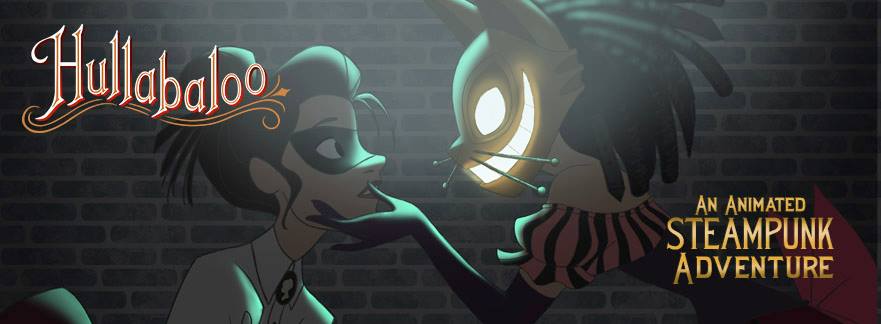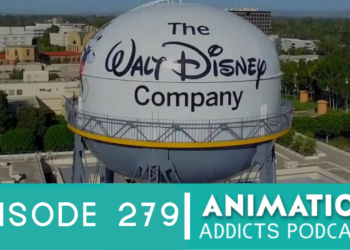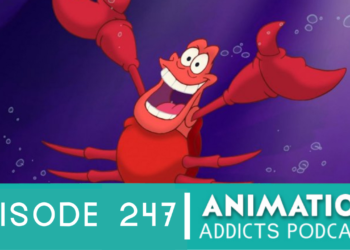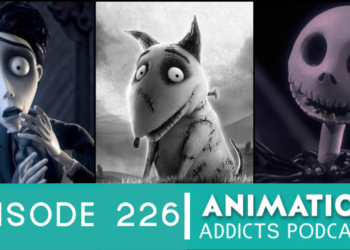Introduction
It’s the conversation that never dies. Always evolving. Never-ending. I think you already know what I’m talking about: the current state of hand-drawn animation and what can be done to preserve the medium.
While the turns in conversation on the topic are never clear-cut, there still remains an intense fervor and unending hope for that fabled day when hand-drawn animation finally finds its way back into prominence (and back onto theater screens), that someone will break the code and inspire an industry-wide revival of hand-drawn feature animation, ensuring both a renewed level of popularity with the general audience and the medium’s longevity.
Does it sound perpetually lofty and even a bit wishy-washy? Sure, but it’s the very thing that has kept the fire burning and the passion alive for those who long to see this day – for however long it takes to get there.
For example, a recent Kickstarter campaign has been spearheaded by none other than animation legends Don Bluth and Gary Goldman to make Dragon’s Lair: The Movie into an actual movie. Aside from the obvious nostalgia factor, the project was marketed – of all things – on the basic premise of “Hey, this could be our chance to resurrect hand-drawn animation!” This is the exact same selling point that made last year’s Hullabaloo project one of the most talked-about articles on our website (and still to this day). It’s a selling point that works, because it appeals handsomely to the crowd that I talked about earlier – the people that want to see hand-drawn feature animation in US theaters again.
If you are one of those people, allow me to splash cold water on your dreams and present you with reality.
We’ve talked before about the reasons for why hand-drawn animation is no longer attractive to today’s industry. But it’s taken me a while to come to a conclusion that I wish I’d known far earlier.
The reason why hand-drawn feature animation is is no longer of any viability to the big studios is because – in its waning days – it has failed to produce both a critical and commercial success of the likes of Frozen, How to Train Your Dragon, and countless other CG mega-hits. Thus, in the eyes of the industry, it ceased to be a medium that was worth spending time, money, and resources on.
However harsh that may have sounded, it is with that in mind that I nailed down three distinct problems that would have to be addressed if you still believe that hand-drawn feature animation can make a comeback.
A Solid Story
Let’s start with the main ingredient to any successful animated film: story. This has been the biggest problem with the last major hand-drawn animated features. Sure, all the effort put into the animation is nice, but what’s also great is a strong narrative foundation. Indeed, this is true of any animated film – 2D or CG. If you can’t get people to buy into the story enough for them to sit through a 95-minute animated feature, then it all falls apart. If people didn’t buy into the narrative of Kung Fu Panda, then there wouldn’t be a third film coming out in a few months.
Basically, what I’m getting at here (and it’s the easiest thing in the world to understand) is that there needs to be just as much care and attention put into the story, world, and characters as there is in the animation. Big studios won’t care about the aesthetic capabilities of hand-drawn animation, but they will care a whole lot if the storytelling draws crowds to a theater.
A Bankable Concept
This leads into the second thing that’s needed for a hand-drawn feature to work today – a solid concept with equally solid appeal. To better explain my point, and what should and shouldn’t be done, I will use Dragon’s Lair: The Movie. If you feel that the following is too negative, feel free to yell at me in the comments section.
For starters, I can clearly understand why Don Bluth and Gary Goldman have picked Dragon’s Lair as their ‘hand-drawn resurrection’ movie. It was one of the biggest arcade games of its time and its influence on both game developers and animators is undoubted. It is also one of Bluth’s most memorable creations (hence the nostalgia factor).
But here’s the thing (and I’m being brutally honest here): the animation industry is very different today from what it was in 1983. Also, Dragon’s Lair isn’t quite the pop-culture sensation that it was back in the 80’s (last I checked). I have no doubt that there are at least two kinds of people who will be supporting that Kickstarter campaign: people over the age of 40, and hardcore animation fans (the people who read our website, for example).
If Dragon’s Lair: The Movie is to have any decent box-office prospects – and that’s assuming if it even gets made at all – then the movie will have to find a way to appeal to the general audience. That is, people who aren’t over the age of 40 and aren’t hardcore fans of animation (or even have any idea of who Don Bluth is). It’s a harsh truth, but it is the truth.
Again, “saving” or “resurrecting” hand-drawn feature animation can’t be your only selling point. That’s only one way of ensuring that the art form will rest in its grave forever. The story and concept should always come first. If you want to show the industry that hand-drawn feature animation is still a thing, then those two things should be your selling point.
Evolving the Art Form
The third and final suggestion is one that I’ve already discussed twice over by this point: evolving the art form.
The days of the “Nine Old Men”-style of hand-drawn features are long gone. Trying to bring that back would make for a nice nostalgia trip for the viewer, but it is in no way a long-term solution for hand-drawn feature animation.
Indeed, if there is anyway to know what the hand-drawn animated feature would look like (or should look like) today, than I simply point you to projects like Kariba and Klaus. Both are projects that push the art form into new areas and unexplored territory. Of course, there are also Disney’s Meander-animated short films like Paperman and Feast, which present exciting prospects should a feature film be created with the technology. But on the whole, Kariba and Klaus should be seen as true examples of how to evolve hand-drawn animation. Everybody talks about trying to resurrect it or save it, but I think it would be more productive if the discourse were to focus on how to evolve the format.
Conclusion
Even with what I have laid out above, I recognize that there still won’t be a clear-cut solution for how to bring back hand-drawn feature animation (if there was, this and other opinion articles wouldn’t exist). But I do believe that there needs to be a different way to go about it than simply riding on the allure of an art form that’s been gone from US theaters since 2011. If hand-drawn feature animation is to have a future, then said future needs to be led by people who not only know what goes into every good animated film, but people who can expand the visual palette of hand-drawn feature animation and bring it to a place that many hope it will be: here and now.
What do you think? In your own opinion, what else is needed in order for a hand-drawn animated feature to succeed in today’s industry?
[polldaddy poll=9184694]
Edited by: Kajsa Rain Forden






![[OPINION] 10 Heartwarming Animated Adverts to Watch This Holiday Season](https://www.rotoscopers.com/wp-content/uploads/2021/12/Picture61-350x250.jpg)
